Urban Forest Carbon Credits 101
There is rarely enough money to grow and care for city trees, but carbon credits are becoming a viable way address funding gaps
November 12, 2022 | Alec Sabatini
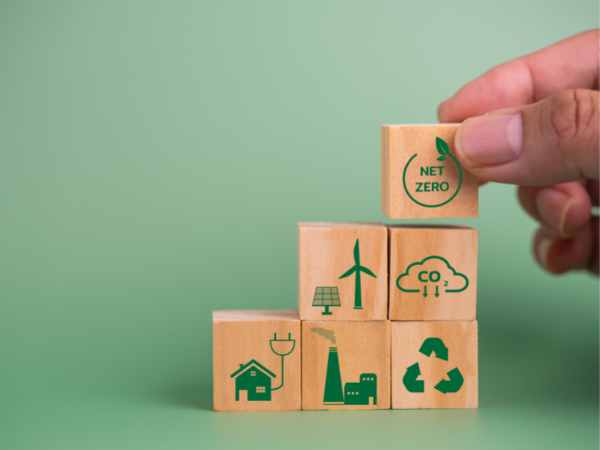
Carbon credit markets have been booming and there is a premium to be paid for projects sequestering carbon dioxide (aka a tree’s day job). At the same time, municipalities and nonprofits are always on the hunt for additional funding for tree planting and maintenance. Clearly, there is an opportunity here!
Large scale, rural reforestation has been in the carbon credit game from the beginning, but over the last few years urban forest projects have also finally gotten a seat at the table. Read on for an introduction to all things urban forest carbon credits, including how the carbon market works and what it takes to earn credits from urban forestry projects.
Carbon Credits Explained
First, the ground rules of carbon credits.
Carbon credits are a mechanism for companies, governments, or individuals to balance out their carbon dioxide emissions by investing in projects that remove carbon from the atmosphere or avoid emitting it in the first place. The emitting parties purchase credits to offset their own emissions, usually to keep in line with an established goal, such as net-zero emissions.
Carbon Credit
A carbon credit is a tradable certificate representing one ton of carbon dioxide (CO2) removed or avoided. To earn credits for CO2 removal, organizations register their project with a carbon registry, plant trees, and receive third-party verified credits based on the trees health and growth at periodic intervals. To earn carbon credits for avoiding CO2 an organization must preserve an urban forest facing some threat of removal.
In carbon credit lingo this concept is called additionality. It means the emission reductions or removals must be in excess of what would happen under a “business as usual” scenario and the activity would not have occurred without the incentive provided by the carbon credit. Quality carbon credits require proof of additionality.
Carbon Markets
The trading system through which carbon credits are sold is called a carbon market, and there are two types.
- Mandatory carbon markets, such as California’s cap-and-trade program, have a regulatory limit (cap) on company emissions in certain sectors, such as energy or transportation. Companies buy and trade credits to stay in compliance.
- Voluntary carbon markets are for companies and organizations that choose to offset carbon emissions of their own accord. There is no regulatory body that governs these markets.
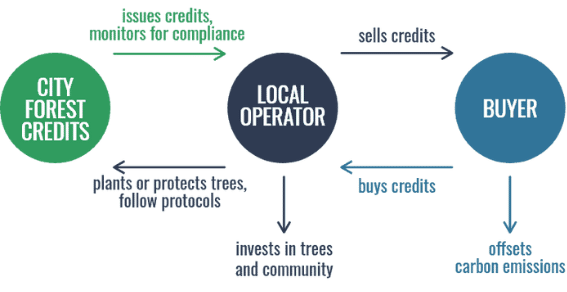
Carbon Registries
Carbon registries are responsible for issuing and tracking credits. They develop standards and protocols that projects follow in order to earn third-party verified credits. You can see an example of a tree planting protocol from the nonprofit carbon registry City Forest Credits here. Ultimately, the carbon registry’s role is to ensure integrity of each carbon project.
This diagram shows how a carbon registry fits into the process with the local operator (the entity responsible for the urban forest project) and the credit buyer. Graphic Credit: City Forest Credits
Crediting Urban Forests
There are four registries that generate almost all of the world’s voluntary market offsets. The first protocol for urban forest carbon credits was launched in 2008 by one of the big four, the Climate Action Reserve. Unfortunately, the development of those protocols was heavily influenced by rural forest protocols that didn’t align well with the smaller carbon volumes of urban projects, and it never gained much traction.
Urban forest projects are a different animal than a lot of other offset projects. The stakeholder groups leading the project are usually municipalities and nonprofits, instead of for-profit carbon developers. The volumes of carbon are much lower, but the co-benefits (the positive impacts of urban trees besides sequestration) are massive. Urban residents often have limited access to nature, which is an issue because there is a mountain of research connecting access to trees and greenspace with improved health and well-being.
“Urban forest carbon projects directly benefit millions of people and take place right where people live, breathe, and recreate.”
Liz Johnston, Director of City Forest Credits
This unrealized opportunity inspired the creation of City Forest Credits, a nonprofit carbon registry focused solely on urban forests.

City Forests Credits’ Process
City Forest Credits (CFC) was launched in 2015. Their first step was to gather a volunteer group of top scientists and representatives from city climate programs, watershed management, arborists, utilities, and land trusts to draft practical urban forest carbon credit protocols. The group developed two protocols, one for urban tree planting and one for urban tree preservation.
The rules of the protocols ensure one credit equates to one ton of carbon sequestered. Below are some of the key points of each protocol.
Carbon Credits for Tree Planting
There are 13 tree planting projects currently generating carbon credits with CFC. Complete details on project requirements are available at the City Forest Credits website.
- CFC requires a 26-year commitment for tree planting projects
- Projects must be located in or adjacent to urban areas, city, towns, municipal watersheds, or transportation/utility right of way
- Carbon credits are issued ex ante, meaning the forecasted CO2 storage of the tree at year 26 is used to issue credits in advance
- The credit issuance periods are after planting, and at years 4, 6, 14, and 26
Tree Planting Example: Trees Forever
Trees Forever is a community forestry nonprofit supporting tree planting, protection, and education across Iowa and Illinois since 1989. They are a great example of how urban forest carbon credits are succeeding at a small scale, while providing a valuable source of funding.
Trees Forever registered tree planting projects with CFC in Des Moines in 2019 and 2021. In partnership with the city and Microsoft, Trees Forever has planted 2,124 trees along city streets and parks. The project aims to increase citywide canopy while also supporting a youth workforce training program.
Over the 25-year project duration, the trees will generate 5,973 credits. Trees Forever has already sold the 597 credits that were issued post-planting. At a $34 credit price, that equates to over $20,000, before taxes and fees, that Trees Forever gets to reinvest in their programs.
Trees Forever hopes to expand their carbon credit projects to Cedar Rapids and has a grant from the US Forest Service to further explore projects in smaller, rural communities throughout Iowa and Illinois. Trees Forever uses TreePlotter INVENTORY to plot the location of new plantings and track tree details like species and DBH.
Photo Credit: Trees Forever
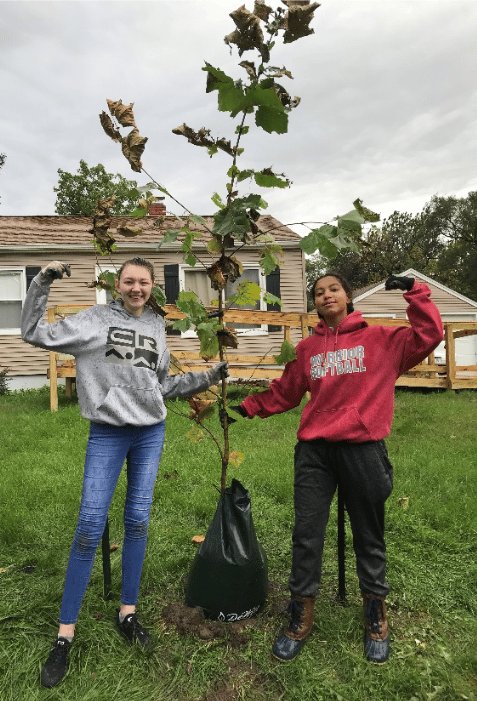
Carbon Credits for Tree Preservation
There are 7 third-party verified projects registered through CFC’s tree preservation protocol. Rural forest carbon projects typically require 1,000 to 5,000 acres to be feasible. Urban park spaces are inherently much smaller, and the largest CFC preservation project underway to date is 200 acres. Complete details on project requirements are available at the City Forest Credits website.
- Tree preservation projects require either a 40-year or 100-year project duration
- Projects must be located in or adjacent to urban areas, city, towns, municipal watersheds, or transportation/utility right of way
- The threat of loss of the trees must be demonstrated by showing the trees have no prior protection from removal, have a land use designation that allows for at least one non-forest use, and are surrounded partially by development or would have a higher market value after development
- The project operator must prove preservation from removal via a recorded easement, covenant, or deed restriction
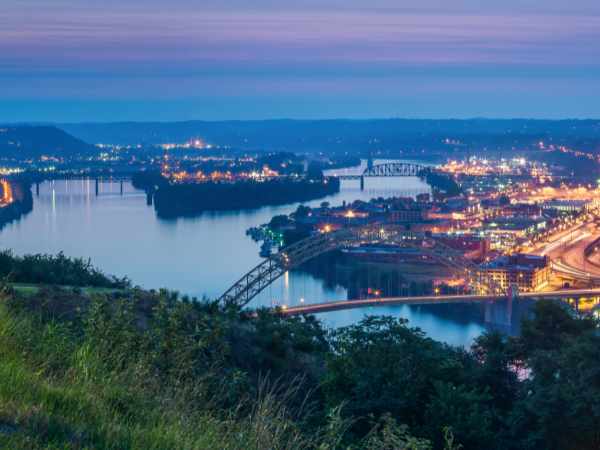
The protected site is 5 miles upstream from the confluence with the Monongahela River, which runs right through downtown Pittsburgh.
Tree Preservation Example: Buena Vista Heights Conservation Area
The Allegheny Land Trust protected 124 acres of woodlands from rapid encroaching residential development in Allegheny County, PA. The area is called the Buena Vista Heights Conservation Area, and in 2020 it was registered with CFC as a tree preservation project. Protection of the forest contributes to maintaining clean drinking water for Pittsburgh region residents, and the 40-year-old maple, cherry and oak-hickory forest provides habitat for deer, turkey, and many species of birds, as well as a destination for hikers, birders, and mountain bikers.
The project was issued 13,966 credits. Revenue generated from the sale of carbon credits will be put towards acquisition costs, land stewardship, and future expansion of this and other conservation lands. The assessed co-benefits from the preserved area come out to a total savings (avoided costs) of $288,364 per year, or over $11 million over 40 years!
The Payoff: How to Sell Urban Forest Carbon Credits
City Forest Credits issues and maintains the credit database, but does not sell the carbon credits, that is up to the discretion of each project operator. Once a project is issued credits, the operator gets to decide when and to whom they sell their credits. CFC can refer operators with national carbon developers or brokers that facilitate sales.
In the spring of 2022, one company purchased every available urban forest carbon credit issued by CFC. The 31,000 credits came from 13 tree planting and preservation projects operated by cities and nonprofits around the country. The company, Regen Network, paid over $1,000,000 for the sale, which came out to between $34 to $45 per credit. To put that in context, the average price for forest carbon credits in the voluntary market is about $4 to $6.
Urban forest carbon credits are low in volume, but extremely high in value because credit buyers know they support a lot more than just CO2 storage. These trees live right in the heart of our communities and provide vital co-benefits, like cooler temperatures and improved public health. Urban forestry carbon credits give companies and governments a way to support climate goals and community livability at the same time.
How Can We Get More Funding?
It’s a question overhead at any local government or nonprofit that manages urban forests. Carbon credits are officially part of the answer. City Forest Credits has provided a pathway for local projects to earn over $3 million through credit sales and grants, and are closing in on issuing 100,000 carbon credits to projects in the next few months.
Carbon credits are not a funding panacea. A quick back-of-the-envelope credit estimate for a 1,000-tree planting project in the Midwest climate zone is 1,800 credits. Sold at $34/credit, that equates to $6,100 after initial verification Year 1, $18,400 at Year 4, $18,400 at Year 6, $6,100 at Year 14, and $12,000 at Year 26. However, for organizations willing to take on the long-term commitment, carbon credits provide vital supplemental funds for doing what they do best: enhancing urban forests.
If you would like to learn more about how inventory software can support carbon credit projects, please get in touch here. For those wanting more in-depth information about the carbon credit process, check out the City Forest Credits website.
Related Resources
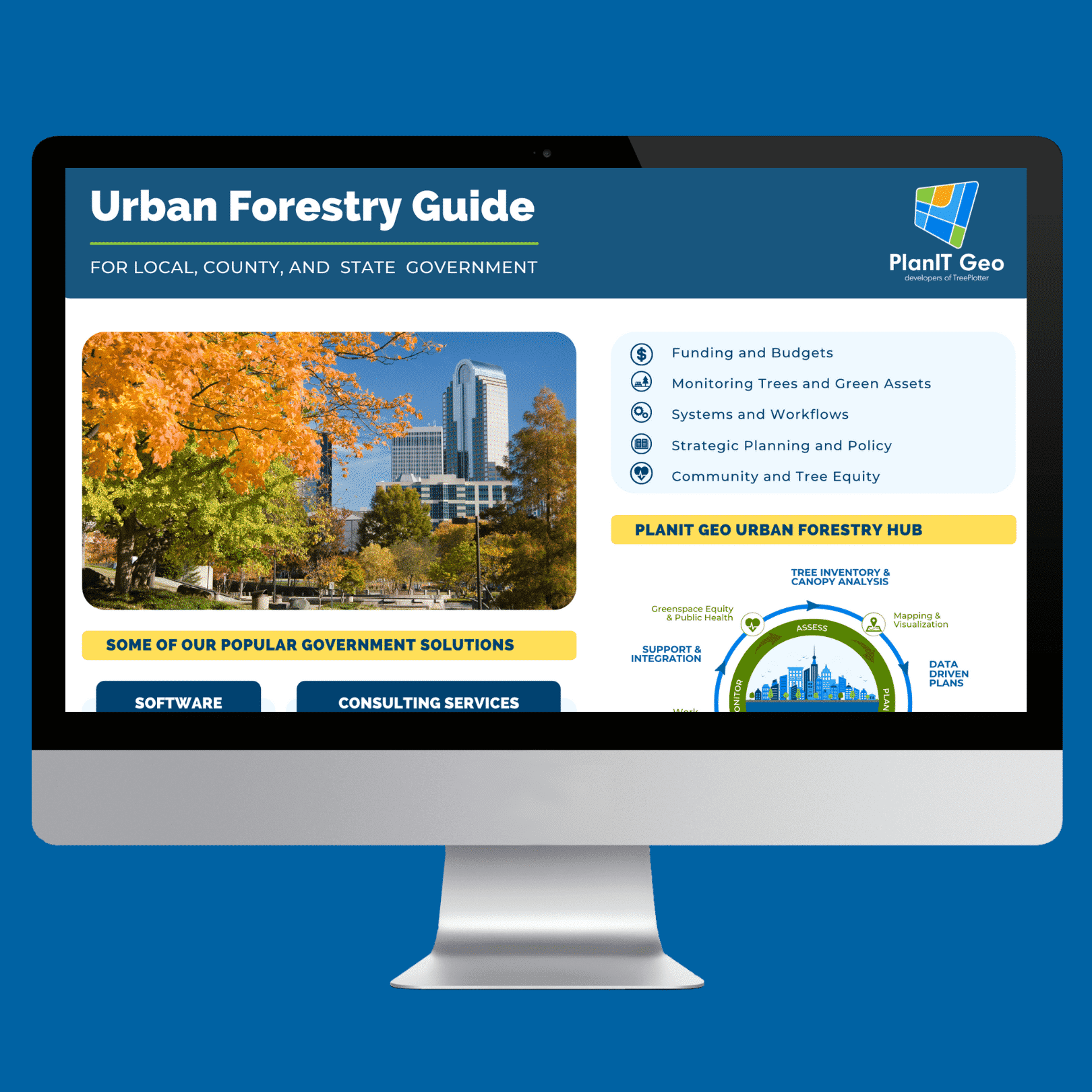
Urban Forestry Guide for GOVERNMENTS
There is a lot that goes into running an effective urban forestry program. As a hub for urban forestry innovation, PlanIT Geo is able to provide support and guidance at any step in a program’s evolution. This guide lays out all of the solutions that we have used to help public urban forestry programs grow, improve, and adapt.
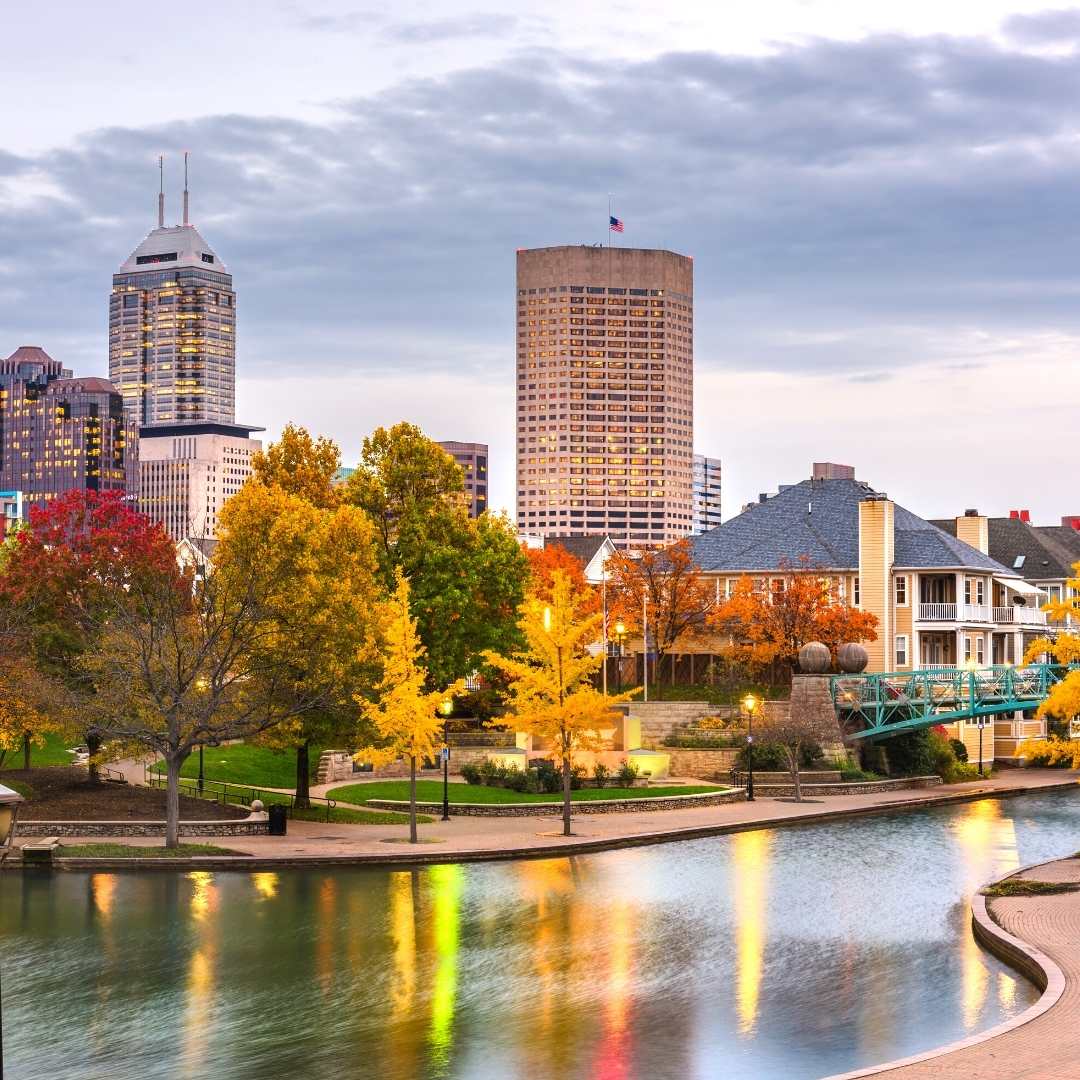
Urban Forestry Grant Resources Directory
YOUR GO-TO SOURCE FOR URBAN FORESTRY GRANTS.
Find grants in your area. Our urban forestry consultants have helped many communities submit and win grants. Find a grant or start a conversation with our consultants about getting your program goals funded.

Get Your Urban Tree Canopy Assessment TOMORROW
We are the first in our industry to provide 60-cm resolution land cover data built into an interactive tree canopy software tool, making it simple for you to view, plan and achieve your tree canopy goals. Off-the-shelf tree canopy analysis for the lower 48 is already completed.
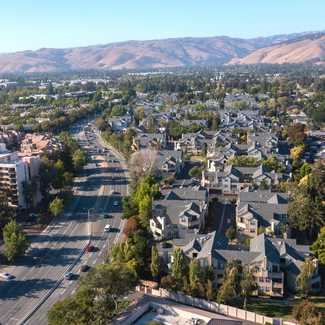
Looking To The Future To Plant Trees With Staying Power
It requires careful planning to select trees that will thrive in the expected climate conditions 20, 30 and 60 years in the future. We were confronted with this task in a project in early 2022 to review and expand the planting palette for the City of Fremont, California. To crack the case we developed a new method called the Sister Climate City Analysis to model the future climate of Fremont with a real world example.
Stay Up To Date With The Latest News and Events
Join Our Community
Stay informed on the urban forestry industry with our monthly TREEbune newsletter, live webinars, and industry-specific content delivered to your inbox.
Urban Forestry Webinars
PlanIT Geo has a substantial on-demand webinar library. Get CEU credits, grow your knowledge base, and stay current on cutting edge industry technology.
Follow Us
We love to share industry-related news, software tutorials, blogs, and company news across our social channels.
Stay Up To Date With The Latest News and Events
Join Our Newsletter
Stay informed on the urban forestry industry with our monthly TREEbune newsletter, live webinars, and industry-specific content delivered to your inbox.
Urban Forestry Webinars
PlanIT Geo has a substantial on-demand webinar library. Get CEU credits, grow your knowledge base, and stay current on cutting edge industry technology.
Follow Us
We love to share industry-related news, software tutorials, blogs, and company news across our social channels.
